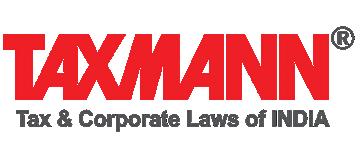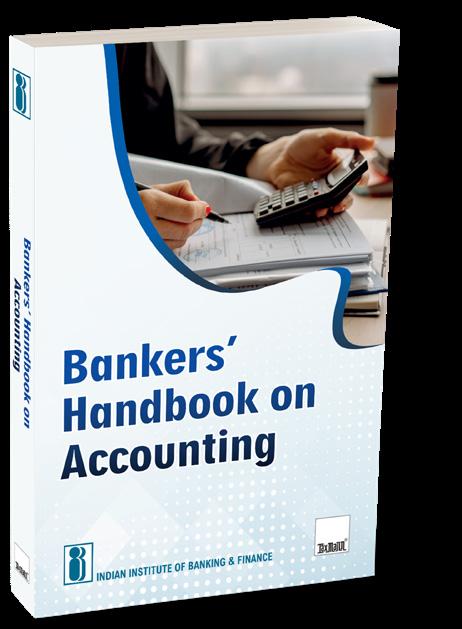







































































Afterstudyingthisunit, youwillbeabletoappreciatethe:
Definition and Meaning of Accountancy
Nature and Purpose of Accounting
Origin and History of Accounting
Accounting Concepts, Accounting Conventions and Accounting Systems
Major Types of Accounting
Accountingofteniscalledthelanguageofbusiness. Thebasicfunctionofany languageistoserveasameansofcommunication. Inthiscontext, thepurposeof accountingistocommunicateorreporttheresultsofbusinessoperationsandthe financialhealthoftheorganization.
ThemostaptdefinitionofAccountinghasbeengivenbythe ‘AmericanInstituteof CertifiedPublicAccountants’, whichisasunder:
‘Accountingisanartofrecording, classifyingandsummarizing, inasignificant mannerandintermsofmoney, transactionsandeventswhichare, inpartatleast, ofafinancialcharacter, andinterpretingtheresultsthereof.’












Manypeopletakebook-keepingandaccountancytomeanoneandthesame, but thetwoaredifferent, Accountancyisawiderconceptandincludesbook-keeping. Book keepingmeansrecordingthebusinesstransactionsinthebooksoforiginal entryandintheledgers. Itdealswithrecordingoftransactionsandaccounting withtheirinterpretation. Ontheotherhand, accountancymeansthecompilationof accountsinsuchawaythatoneisinapositiontoknowthestateofaffairsofthe business. Accountinginformationisderivedfromtherecordoftransactionsinthe booksofaccount.
Financialstatements, normally, meansthebalancesheet, profitandlossaccount, statement ofchangesinthefinancialposition (whichmaybeeitherafundflowstatementora cashflowstatement), explanationstatements, notesandschedulesformingpartofthe financialstatement. Theobjectiveofafinancialstatementistoprovideinformation aboutthefinancialposition, performanceandchangesinthefinancialpositionof anenterprise. Theusersofafinancialstatementincludegovernmentauthorities, e.g. incometaxdepartment, salestaxdepartment, etc., shareholders, investors, business associates, directors, banksandfinancialinstitutions, etc.
Accountingisthelanguageofbusiness, communicatingthroughthefinancialstatements thefinancialresultsandperformanceofanenterprise, tovarioususersofsuch financialstatements. Itisintheinterestofallthatthefinancialstatementsexhibit a ‘trueandfair’ viewofthestateofaffairsofanentity. Itistheartofrecording, classifying, summarizingandinterpretingmonetarytransactions.
Anylanguagehasasetofrulescalledgrammar. Recordingofeventsinaccounts alsohasitsownsetofrulesandcriteria. Suchrules, arecalledthe ‘Accounting Standards’ (AS).
Abusinessentity, operatingforprofit, mustkeepasystematicrecordoftheday-todayeventssothatitcanknowaboutitsprofits/losses, assetsandliabilities. Even institutions, whichdonothaveprofitearningasanobjective, mustkeeparecordof theirincomes, expendituresandfinancialstatus. Thispurposeisachievedbykeeping systematicbooksofaccountbasedonsoundaccountingprinciples.
Accountancy, thus, involvesthefollowing:
1.Systematic classification of business transactions, for recording them in the books of account.
2.Recording of events and transactions in the books of account, called book keeping.
3.Summarising of the recorded events, i.e . preparation of a trial balance from a ledger and, subsequently, the preparation of balance sheet and the profit and loss account, from the trial balance.
Thefeaturesofaccountingare:




4.Interpreting the financial transactions from the recorded data and the financial statements.


1. Accounting is the art of recording, classifying and summarising business transactions : It not only records the business transactions but also records them in an orderly manner. It also classifies business transactions according to their nature, before recording them in the books of account, e.g. all purchase transactions are first entered in the purchase register. This also helps to find the total purchases during a given period. Accounting also summarises the data, recorded in the books of account, and presents them in a systematic way, in the form of:
( a )Trial Balance
( b )Profit and Loss account
( c )Balance Sheet
( d )Cash Flow Statement
2. Accounting records the transactions in terms of money : Accounting records business transactions by expressing them in terms of money. This makes the recorded data more meaningful. Events that cannot be expressed in monetary terms, are not recorded in the books of account. Events such as, a quarrel between the management and workers of a company, are not recorded in its books of accounts, though loss or monetary outflow from it, is recorded in its books of accounts.
3. Accounting records only the transactions of a financial character : Accounting records only those events and transactions that are financial in nature. Let us say that a very high-speed computer is bought by a business entity for Rs.1 lakh, but the entries in the books of account will not record the computer’s efficiency or the brand name as such, but will record only the cost price.
4. Accounting also interprets the financial data : The business transactions/events, recorded in the books of account, are also interpreted by accounting. The interpretation helps in making meaningful decisions in the future. For example, a bank may study the balance sheet of an entity, before taking a credit decision. Thepurposesandtheobjectivesofaccountancycanbebrieflylistedoutasunder:
1. To keep a systematic record
It is very difficult to remember all the business transactions that take place. Accounting serves this purpose of record keeping, by promptly recording all the business transactions in the books of account. Accounting also records the assets (properties and possessions) and liabilities (loans and debts) of the business.






2. To ascertain the results of the operations
Accounting helps in ascertaining the result, i.e. profit earned or loss suffered in a business during a particular period. For this purpose, a business entity prepares either a trading and profit and loss account or an income and expenditure account that shows the profit or loss of the business, by matching the items of revenue and expenditure of the same period.
3. To ascertain the financial position of the business
In addition to profits, a businessperson must know his financial position, i.e. the availability of cash, the position of assets and liabilities, etc. This helps the businessperson to know his financial strength. Financial statements are the barometers of health of a business entity. Just as a doctor knows the health of a person by feeling his pulse, in the same way a look at the balance sheet of an organisation reveals its financial health. It also helps to ascertain the assets and liabilities, i.e . the amounts receivable from debtors and payable to creditors.
4. To facilitate rational decision-making
Accounting records and the financial statements provide the financial information that helps in making rational decisions about the steps to be taken with respect to the various aspects of business. Such decisions may be in respect of:
( a )Should a part or product be made in the factory or, purchased from outside?
( b )What should be reasonable selling price of a product or a service?
( c )What should be the maximum discount offered to a special customer?
5. To satisfy the requirements of law
Entities such as companies, societies, public trusts, etc., are compulsorily required to maintain accounts as per the law governing their operations, such as the Companies Act, Societies Act, Public Trust Act, etc., the maintenance of accounts is also compulsory under Central Goods and Services Tax Act and Income-tax Act.
Advantagesoffinancialaccounting
( i )It provides information, useful for making economic decisions.
( ii )It serves primarily those users who have limited authority, ability or resources to obtain information and who rely on financial statements as their principal source of information about the economic activities of an enterprise.
( iii )It provides information useful to investors and creditors, for predicting, comparing and evaluating cash flows in terms of amount, timing and related uncertainty.
( iv )It provides users with information for predicting, comparing and evaluating the earning power of an enterprise.




( v )It supplies information useful in judging the management’s ability to utilise the enterprise resources effectively for achieving the primary enterprise goals.


( vi )It provides factual and interpretive information about the transactions and other events, that are useful for predicting, comparing and evaluating the earning power of an enterprise as it discloses the basic underlying assumptions with respect to matters subject to interpretation, evaluation, prediction or estimation.
Thehistoryofaccountingindicatestheevolutionarypatternwhichreflectsthe changingsocio-economicconditionsandtheenlargedpurposestowhichaccounting isapplied. Inthepresentcontext, therearefourphasesintheevolutionofaccounting thataredistinguishable.
Intheearliertimesinhistory, wealthypeopleemployed ‘stewards’ tomanagetheir property. Thesestewardsrenderedanaccountoftheirstewardshiptotheirowners, periodically. Thisnotionliesattherootoffinancialreportingeventoday, which essentiallyinvolvestheorderlyrecordingofbusinesstransactions, commonlyknown as ‘book-keeping’!
Financialaccountingdatesfromthedevelopmentoflarge-scalebusinessandthe adventofthe ‘JointStockCompanies’ (aformofbusinesswhichenablesthepublic toparticipatebyprovidingcapitalinreturnforshares, intheassetsandtheprofits ofthecompany). Thisformofabusinessorganisationpermitsalimittotheliability oftheirmemberstothenominalvalueoftheirshares. Thismeansthattheliability ofashareholder, forthefinancialdebtsofthecompany, islimitedtotheamount hehadagreedtopayontheshareshebought. Heisnotliabletomakeanyfurther contributionintheeventofthecompany’sfailureorliquidation. Asamatteroffact, thelawgoverningtheoperations (orfunctioning) ofacompanyinanycountry (for instancetheCompaniesActinIndia) givesalegalformtothedoctrineofstewardship whichrequiresthatinformationbedisclosedtotheshareholdersintheformofannual incomestatementandbalancesheet.
Brieflyspeaking, theincomestatementisastatementofprofitandlossmadeduring theyearofthereport; andthebalancesheetindicatestheassetsheldbythefirm andthemonetaryclaimsagainstthefirm. Thegeneralunwillingnessofthecompany directorstodisclosemorethantheminimuminformationrequiredbylaw, andthe growingpublicawareness, haveforcedthegovernmentsinvariouscountriesofthe worldtoextendthedisclosure (ofinformation) requirements.






Theimportanceattachedtofinancialaccountingstatementscanbetracedtotheneed ofthesocietytomobilisethesavingsandchannelthemintoprofitableinvestments. Investors, whethertheyarelargeorsmall, mustbeprovidedwithreliableand sufficientinformationinordertobeabletomakeefficientinvestmentdecisions. This isthemostsignificantsocialpurposeoffinancialaccounting.
TheindustrialrevolutioninEnglandpresentedachallengetothedevelopmentof accountingasatoolofindustrialmanagement. Costingtechniquessawdevelopmentas guidestomanagementactions. Theincreasingawarenessonthepartofentrepreneurs andindustrialmanagersforusingscientificprinciplesofmanagement, inthewake ofthescientificmanagementmovement, ledtothedevelopmentofcostaccounting. CostAccountingisconcernedwiththeapplicationofcostingprinciples, methodsand techniquesforascertainingthecosts, withaviewtocontrollingthem, andassessing theprofitabilityandefficiencyoftheenterprise.
Theadventofmanagementaccountingwasthenextlogicalstepinthedevelopmental process. Thepracticeofusingaccountinginformationasadirectaidtomanagement, isaphenomenonofthetwentiethcentury, particularlyofthelastthirty-fortyyears. Thegenesisofmodernmanagement, withitsemphasisondetailedinformationfor decision-making, providesatremendousimpetustothedevelopmentofmanagement accounting.
Managementaccountingisconcernedwiththepreparationandpresentationof accounting, andcontrollinginformation, inaformthatassistsmanagementinthe formulationofpoliciesandindecision-makingonthevariousmattersconnected withroutineorthenon-routineoperationsofabusinessenterprise. Itisthrough thetechniquesofmanagementaccountingthatthemanagersaresuppliedwith information, thattheyneedforachievingobjectivesforwhichtheyareaccountable. Managementaccountinghasthus, shiftedthefocusofaccountingfromrecordingand analysingfinancialtransactionstousingtheinformationfordecisionsaffectingthe future. Inthissense, managementaccountinghasavitalroletoplayinextendingthe horizonsofmodernbusiness. Whilethereportsemanatingfromfinancialaccounting aresubjecttotheconceptualframeworkofaccounting, internalreports, routineor non-routine, arefreefromsuchconstraints.
Socialresponsibilityaccountingisanewphaseinthedevelopmentofaccounting, andowesitsbirthtoincreasingsocialawarenessthathasbeenparticularlynoticeable overthelasttwodecadesorso. Socialresponsibilityaccountingwidensthescopeof accountingbyconsideringthesocialeffectsofbusinessdecisions, inadditiontothe economiceffects. Severalsocialscientistsandsocialworkers, allovertheworld, have




beendrawingtheattentionoftheirgovernmentsandthepeopleintheircountries, to thedangersposedtotheenvironmentandecologybytheunbridledindustrialgrowth. Theroleofbusinessinsocietyisincreasinglycomingundergreaterscrutiny. The managementsarebeingheldresponsiblefornotonlyefficientconductofbusiness, asexpressedinprofitability, butalsoforwhatitcontributestothesocialwell-being andprogress. Thereisagrowingfeelingthattheconceptsofgrowthandprofit, as measuredintraditionalbalancesheetsandincomestatements, aretoonarrowto reflectthesocialresponsibilityaspectsofabusiness.


Backin1964, thefirstattempttoincludefiguresonhumancapital, inthebalance sheet, wasmadebyHermansson, thatlatercametobeknownas ‘HumanResource Accounting’ (HRA). However, therehadbeenagreatsocio-economicshiftinthe 1990swiththeemergenceof ‘KnowledgeEconomy’, adistinctiveshifttowardsthe recognitionofhumanandintellectualcapitalincontrasttothephysicalcapital. ‘HumanResourceAccounting’ isabranchofaccountingthatseekstoreportand emphasisetheimportanceofthehumanresources (knowledgeable, trained, loyal andcommittedemployees) inacompany’searningprocessandtotalassets. Itis ‘the processofidentifyingandmeasuringdataabouthumanresourcesandcommunicating thisinformationtointerestedparties. Insimplewords, itinvolvesaccountingfor theinvestmentinpeopleandthereplacementcostsaswellasaccountingforthe economicvaluesofpeopletoanorganisation. Generally, themethodsusedfor valuingandaccountingofhumanresourcesarebasedeitheroncostsoroneconomic valueofthehumanresources. However, providingadequateandvalidinformation onhumanassets (capital), whichareoutsidetheconceptofownership, infigures, isverydifficult. Nevertheless, HRAisamanagerialtoolthatprovidesvaluable informationtothetopmanagementtotakedecisionsregardingtheadequacyof humanresourcesandthusencouragingmanagerstoconsidertheinvestmentinthe workforceinamorepositiveway.
Inflationaccountingisconcernedwiththeadjustmentinthevalueofassets (current andfixed) andofprofits, inthelightofchangesinthepricelevel. Inaway, itis concernedwiththeovercomingoflimitationsthatariseinfinancialstatementsbecause ofthecostassumption (thatis, recordingoftheassetsattheirhistoricalororiginal cost) andtheassumptionofastablemonetaryunit. It, thus, aimsatcorrectingthe distortionsinthereportedresultscausedbypricelevelchanges. Generally, rising pricesduringinflationhavethedistortinginfluenceofoverstatingtheprofit. Various approacheshavebeensuggestedtodealwiththisproblem.






Aproductisaresultofvariousindividualcontributions. Valueaccountingisused toevaluateandcapturetheseindividualcontributions, whetherthiscontributionis tangibleorintangibleandisnormallymentionedasa % foreachcontributor. Value accountinghelpsinensuringthateverycontributorgetshisdueshareinthefuture revenuegeneratedthroughtheproduct. Example: If5workersarepickingtealeaves andputtingtheseinthesamebasket, thecontributionofeachistrackedthroughthe valueaccountingsystem. Thisishelpfulindecidingtheshareofrevenueofeach individualonsellingtheleavesinthemarket. Variousvalueevaluationprocesses canbeusedinvalueaccounting.
Fairvalueaccountingtakesintoaccountthecurrentmarketvalueofcertainassets andliabilities. Fairvalueofanassetistheestimatedpriceatwhichanassetcanbe soldundercurrentmarketconditions. Similarly, thefairmarketvalueofaliability istheestimatedamountatwhichaliabilitycanbesettledundercurrentmarket condition. Themeasurementoffairvalueunderthisaccountingmethodisnot concernedwiththeintentionoftheholderoftheassetorliabilitytoholditornot. Underthismethodofaccounting, variousapproachescanbeusedforderivingthe fairvalue. Someoftheseare; Marketapproach, Incomeapproach, Costapproach. Fairvalueaccountingisalsoknownascurrentvalueaccounting. Presently, this methodofaccountingdoesnotenjoywidedegreeofacceptanceduetotheissues likeincreasedcostanddelays, non-availabilityofreliableinformationanddoubts abouttheaccuracyofavailableinformation.
Accountancyandbook keepingareasoldasmoneyitself. TheGreeks, Romans, EgyptiansandBabylonianshadwell-developedrecordsandmaintainedagood systemofrecordkeepingandcontrol. Inthethirteenthandfourteenthcenturies, there wasatremendousdevelopmentofcommerceinItaly, wherethemodernsystemof book keepingtookbirth. In1494, atVenice, LucaDeBargoPacioli, anItalianmonk, publishedhisbookcalledSummathatcontainedasectiononthe ‘DoubleEntry’ book keeping. Hegavebirthtothemodernconceptofbook keepingandaccounts. Inthelatterpartofthefifteenthcentury, therewasanincreaseinuseofPacioli’s workonaccountingbecauseofincreasedtrade, andthenecessityofmerchantsto recordtransactions.
Later, inthesixteenthandseventeenthcenturies, therewereattemptsinEngland andHollandtodesigntherulesfordoubleentryandthepreparationoffinancial
13




statements/reportsandindependentledgeraccounts. Inthenineteenthcentury, the industrialrevolution, andinthetwentiethcenturythetwoworldwars, revisedthe formofaccountingandreportingtotheformsstillinusetilldate.


InIndiaalso, accountancyandbook keepingwerepractisedinascientificform twentycenturiesago. DuringtheregimeofKingChandragupta, Kautilya, oneofhis ministers, wroteabookonaccountancy, namedthe ‘Arthashashtra’. InIndia, the oldmethodofaccounting, calledthe ‘Nama’ method, isstillinuse. Itisalsocalled the ‘Mahajani’, ‘Marwari’ orthe ‘Deshi’ method.
Accountingisanimportantserviceactivityinbusinessandisconcernedwiththe collecting, recording, evaluatingandcommunicatingtheresultsofpastevents. The historyofaccountingdevelopmentreflectsitschangingroleinresponsetothe changingbusinessandsocialneeds. Anentityoperatingforprofitskeepsasystematic recordofitsday-to-dayeventssothatitcanascertainitsprofits/losses, assetsand liabilitiesthroughaccounting. Accountingisdefinedastheartofrecordingofbusiness transactionsinananalyticalformandinvolvesthepreparationoffinancialstatements. Accountingisalsoconcernedwithinterpretingtheresultsofanenterprisefromits financialstatements. Accountingrecordsthefinancialtransactionsintermsofmoney. Accountancyfollowsasetofconcepts, conventionsandprinciples. Accountingis importantasitprovidesasystematicrecordofthebusinesstransactions, ascertains itsresults, facilitatesrationaldecision-makingandsatisfiestherequirementsoflawin caseofentitieslikecompanies, etc. Withtheemergenceofmanagementaccounting, thefocusofaccountinghasbeenshiftingfromamererecordingoftransactionsto thatofaidingthemanagementindecisions.
Accounting: Anartofrecording, classifyingandsummarisinginasignificantmanner andintermsofmoney, transactionsandevents, thatare, inpartatleast, ofafinancial characterandinterpretingtheresultsthereof.
FinancialStatements: Asetofdocumentsthatshowstheresultsofbusiness operationsduringaperiod, howtheresultswereachievedandthepositionofassets andliabilitiesonagivendate. Itnormallymeansthebalancesheet, profitandloss account, statementofchangesinthefinancialposition (whichmaybeeitherafund flowstatementoracashflowstatement), explanatorystatements, notesandrelative schedulesformingpartoffinancialstatements.
AccountingStandards: Thepolicydocumentsissuedbytherecognisedexpert accountancybodyrelatingtothevariousaspectsofmeasurement, treatmentand disclosureofaccountingtransactionsandevents.






1.Define Accounting.
2.What are the features of accounting?
3.What is the difference between financial, cost and management accounting?
1. Bookkeeping differs from accounting in the following manner:
( a )Bookkeeping and accounting are based on different data.
( b )Bookkeeping deals with recording of transactions and accounting with their interpretation.
( c )Bookkeeping is done by non-profit making organizations and accounting by business organizations.
( d )Bookkeeping is the function of Librarian and accounting is the Function of accountant.
2. ________, an Italian monk in Venice gave birth to the modern concept of accounts and bookkeeping.
( a )Luca de Pargo
( b )Luca De Bargo Pacioli
( c )Luca de venice
( d )Luca Bargo Lacioli
3. Accounting is an art of:
( a )Recording, classifying, summarizing and interpreting monetary transactions.
( b )Recording the business transactions in the Books of Original entry and in the ledgers.
( c )Providing information about the Financial position of an enterprise.
( d )Results of business performance to various users.
4. Accounting information is derived from the:
( a )Recording of transactions in books of accounts
( b )Recording of cash flows in the business
( c )Final accounts of the concern
( d )Auditors report ANSWERS
PUBLISHER : TAXMANN
DATE OF PUBLICATION : DECEMBER 2023
EDITION : 2024 EDITION
ISBN NO : 9789357788847
NO. OF PAGES : 564
BINDING TYPE : PAPERBACK


Rs.
This comprehensive guide is essential for understanding the multifaceted and dynamic nature of banking accounting. It meticulously covers every aspect of the field, from foundational principles to advanced accounting standards. It provides a deep understanding of the processes and practices pivotal in shaping financial reporting in the banking sector. It underscores the interlinkage and importance of an organisation’s robust accounting and auditing systems. It serves as an essential resource for understanding the intricacies of banking accounting, covering the following:
Fundamental Principles of Accounting
Financial Statements of Banks
Preparation of Financial Statements of Banks & Taxation
Accounting Standards (Ind AS)
The current edition has also been updated based on banking experts and internal faculty feedback, focusing on practicality and current digital trends.
It is an invaluable resource for students, professionals, and anyone interested in banking accounting. It is structured to cater to both beginners and seasoned practitioners
The Present Publication is the 2024 Edition, updated by Ms Anita Toshniwal | Chartered Accountant. Taxmann exclusively publishes this book for the Indian Institute of Banking and Finance ORDER NOW
